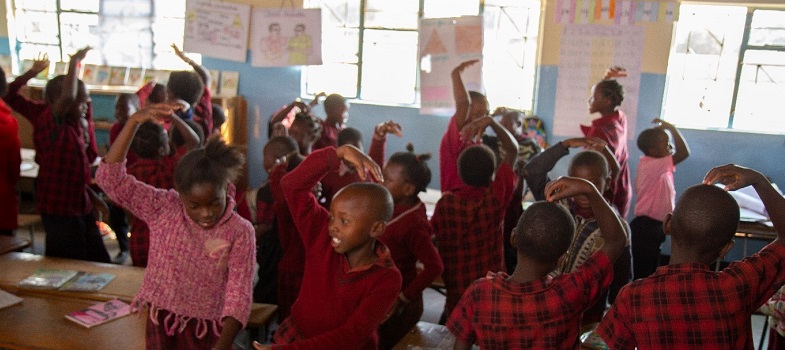Training guide
1. Introduction
Welcome back to this enhanced SPRINT school-based continuing professional development (SBCPD) programme designed to support active teaching and learning in line with the revised Zambian school syllabus. The programme will take six terms (two school years) and will be the focus of your Teacher Group Meetings (TGMs). If you are outside Zambia, you can use the activities and resources to work with colleagues, to support your professional development. It is suggested that you study courses 1-3 in year 1 and course 4–6 in year 2. The titles of the courses are:
Year 1
- Course 1: Classroom management for learner-centred teaching
- Course 2: Inclusive teaching
- Course 3: Assessment for Learning
Year 2
- Course 4: Managing and supporting learner-centred classrooms
- Course 5: Literacy across the curriculum
- Course 6: Being a reflective practitioner
In the previous course you worked on Classroom management for learner-centred teaching and you explored how to use questioning, pair work and local resources to support active teaching and learning in your class. You have practised these approaches and have hopefully recorded your thoughts and ideas in your Teacher Notebook. In the TGMs you have also discussed the different approaches and how to use them.
In this course you will be looking at what is meant by inclusive teaching, how you can use a variety of teaching approaches and strategies such as group work, storytelling, songs, games and roleplay to involve all the learners in your class. You will end the course looking at the Zambian Revised School Curriculum and how the approaches you have tried so far can support you in teaching skills and values alongside knowledge.
Teachers in Chisamba who followed the first course of these training resources reported that it made them realise that some of the lower attaining children could do more than they thought. This was because through careful questioning, pair work and the use of local resources, children became more engaged. Teachers noticed this because they were spending more time walking around the room, listening to children while they talked about their work.

Picture: A poster created by a group of head teachers and SICs in Chisamba after one term of the SBCPD programme, describing the benefits and the challenges.
Activity 2.1: Learning from othersWatch the DESO from Chisamba talking about the impact of the enhanced SBCPD programme in Chisamba in the video below. As you listen, make notes in your Teacher Notebook about the changes the DESO has seen in relation to:
What did you find the most interesting, the most surprising and the most inspiring of the things she said? Write your thoughts in your Teacher Notebook.
|
TESSA examples
As you work through these resources you will find examples of how teachers in Africa have used different strategies to support inclusive teaching. These examples are drawn from the Teacher Education in Sub-Saharan Africa (TESSA) resources. In year 2 you will be looking in more depth at these resources and how they can help your teaching, but if you want to find out more you can do so on the TESSA Website: http://www.tessafrica.net/.
